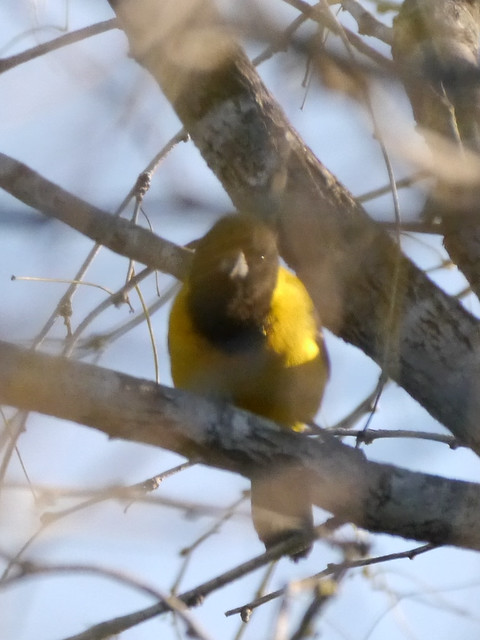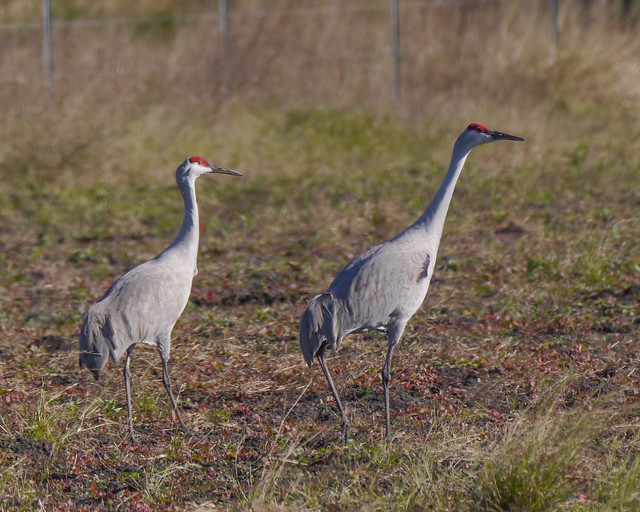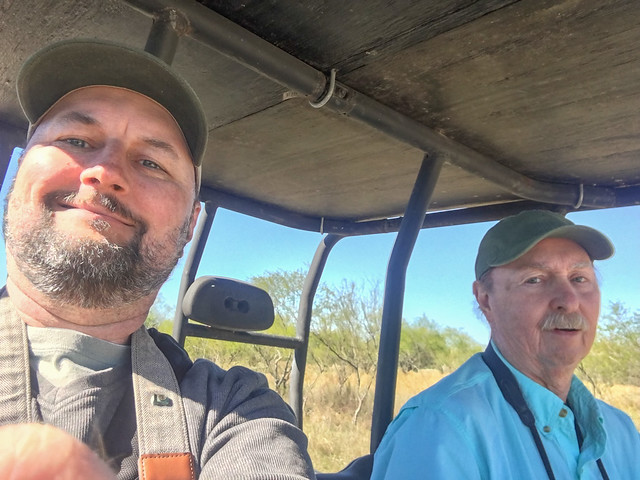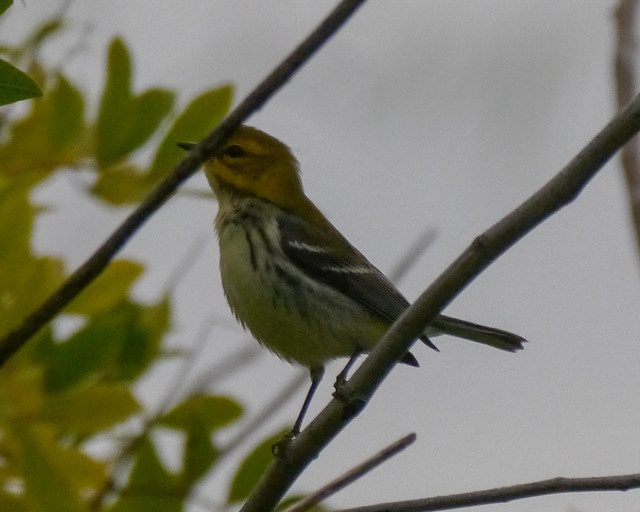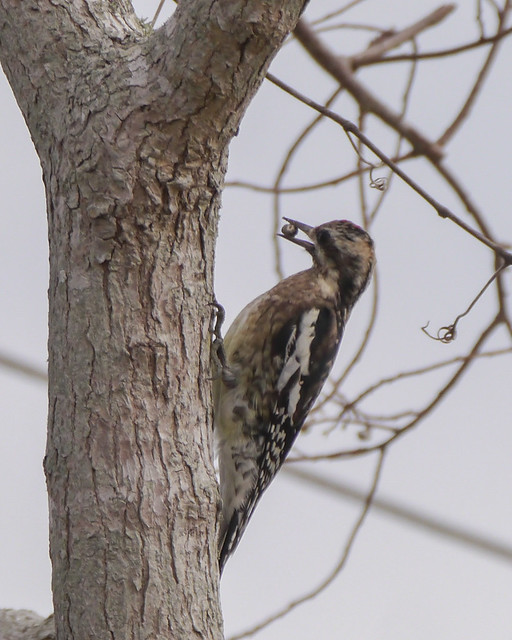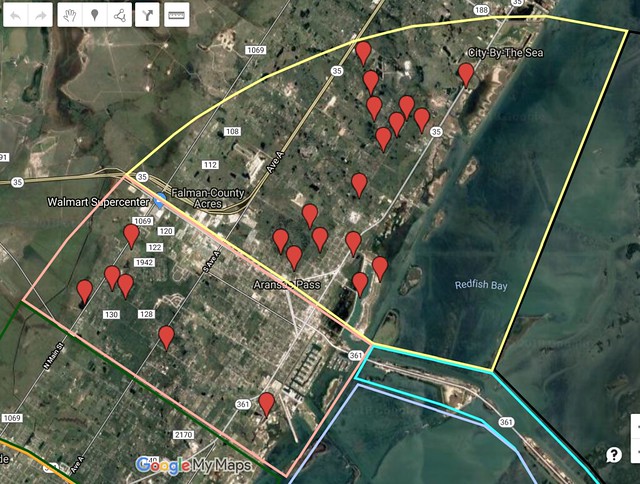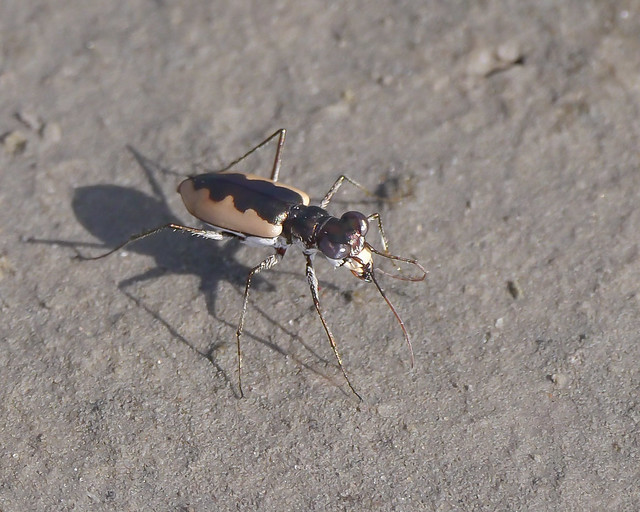Corpus Christi CBC 2018-12-15
My first Christmas Bird Count this season was the Corpus Christi count. Like last year I was fortunate to spend it on the Angelita Ranch in the northwest part of the count circle. This year Joan and Scott covered roughly the south part of the ranch and I and Mel Cooksey covered the north part. I've never spent much time birding with Mel and it was a real treat to be around such an experienced birder.
The ranch let us use a Polaris UTV to drive the truck trails and we mostly birded dense patches of low trees and brush both upland and along the Nueces River. We'd periodically stop the UTV and play an Eastern Screech-Owl recording to see what birds responded. And it was a big treat for me to hear and sometimes see south-Texas specialties and southwestern birds that responded, like Long-billed Thrashers, Verdin, and Green Jays. We were lucky to hear and then briefly see a pair of Audubon's Orioles at one stop. Here's a poor photo I got of one of them:
By the river the composition of birds we attracted with the screech-owl recording changed a bit, and started to include a few Carolina Wrens, Pine Warblers, and even a couple Nashville Warblers. The bird of the day was this striking warbler which Mel spotted and first identified as a Northern Parula:
After some analysis of the photos and research by Mel, we first thought it was a hybrid Northern/Tropical Parula, but now we think that despite its eye-arcs this is a Tropical Parula. Consensus here on iNaturalist agrees. (See the attached observation.) What an interesting bird!
Other birds it was especially fun to see included Anhingas, Couch's Kingbirds, lots of Blue-gray Gnatcatchers and Sandhill Cranes. Sometimes we could only hear the cranes in the distance, sometimes they were flying overhead, and once we got close enough to a group on the ground to get this shot:
I don't have our official tally, but Mel and I spent most of a fun day finding over 60 species of birds. Here we are in the UTV:
Here are a few more photos on Flickr.

